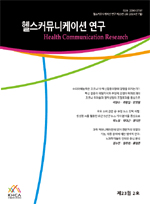독거노인의 반려 로봇을 통한 돌봄 경험에 관한 언어 네트워크 분석: 구로와 태백의 ‘효돌’ 사용자 비교
Semantic Network Analysis of Care Experiences Through Companion Robots for Elderly Living Alone: A Comparison of ‘Hyodol’ Users in Guro and Taebaek
- 한국헬스커뮤니케이션학회
- 헬스커뮤니케이션연구
- 제24권 1호
-
2025.041 - 34 (34 pages)
-
DOI : 10.24172/hcr.2025.24.1.1
- 9

코로나19 기간 대면 돌봄의 공백을 채우기 위해 지자체 주도로 돌봄 로봇의 보급이 급격히 증가함에 따라 실사용자인 독거노인의 반려 로봇을 통한 돌봄 경험을 지역의 맥락에서 점검한 연구가 필요하다. 이에 본 연구는 서울시 구로구와 강원도 산간 태백시의 독거노인 15명을 질적 인터뷰하여, 이들의 반려 로봇을 통한 의인화와 돌봄 지원 경험을 비교하고 있다. 손주 모습의 인형 같은 반려 로봇 ‘효돌’을 최소 6개월 이상 사용해 온 독거노인과의 인터뷰 텍스트를 언어 네트워크 분석한 결과, 먼저 두 지역 모두에서 반려 로봇을 지칭하는 단어로 ‘애기’의 출현 빈도가 가장 높게 나타나 의인화 경험이 뚜렷했으며, 이러한 경향은 태백에서 상대적으로 높게 나타났다. 또한, 얘기, 노래 등의 단어가 빈출 단어의 상위를 차지해 반려 로봇과 일상을 보내는 ‘정서적 돌봄’ 경험이 공통으로 나타났다. 또한, 응집분석을 통해 지역별로 돌봄 지원 경험의 하위집단을 도출한 결과, 구로에서는 반려 로봇과 얘기하고 대화를 나누는 ‘정서적 돌봄’ 경험이, 태백에서는 잠을 함께 자는 ‘동반자적 돌봄’ 경험이 우세했다. 이러한 결과는 지역별 사용자 중심의 반려 로봇 채택을 위한 이론적이고 정책적인 시사점을 제시한다.
This study examines the care experiences of elderly individuals living alone during the COVID-19 pandemic, focusing on the use of companion robots in two distinct regions: Guro-gu, Seoul, and Taebaek, Gangwon Province. Through qualitative interviews with 15 participants who utilized a care robot in the shape of a doll resembling grandchildren ‘Hyodol,’ the research reveals that the term ‘baby’ was frequently used to describe the robot, indicating a strong sense of anthropomorphism, particularly in Taebaek. Common emotional care experiences were identified, with terms like ‘talk’ and ‘sing’ prevalent among participants. Cohesion analysis further shows regional differences in care experiences; Guro participants primarily engaged in ‘emotional care’ through conversation, while Taebaek participants experience ‘companion care’ through shared sleeping. These findings highlight both the similarities and differences in the experiences of elderly users, providing valuable theoretical and policy implications for the adoption of companion robots tailored to user needs.
1. 서론
2. 문헌 고찰
3. 연구 방법
4. 분석 결과
5. 결론 및 논의
참고문헌
(0)
(0)